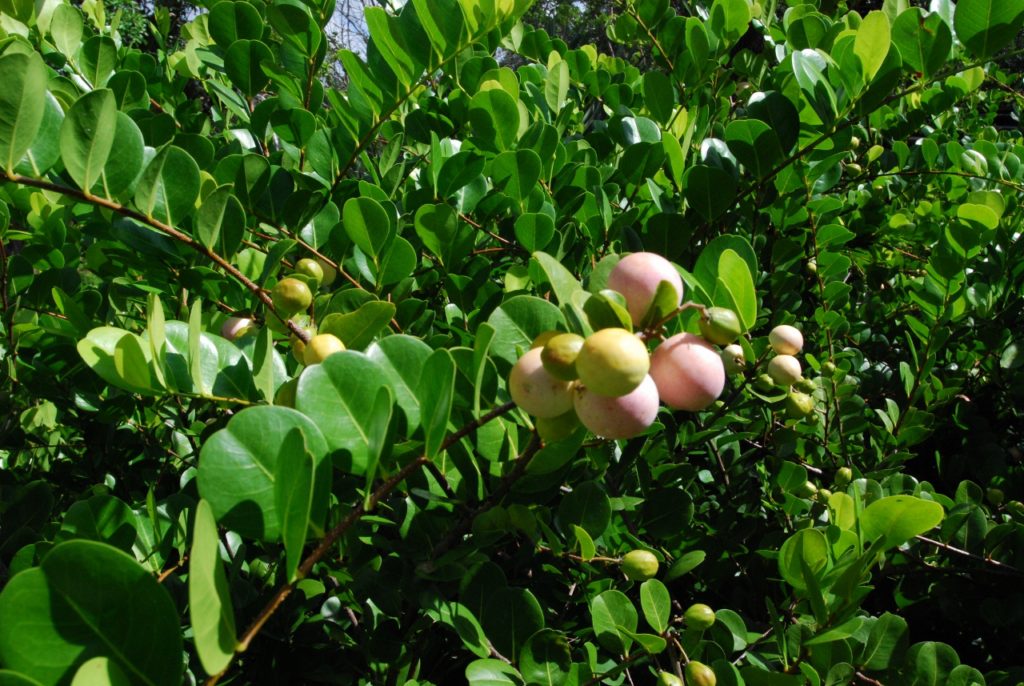
Horizontal Cocoplum
Chrysobalanus icaco var. horizontal
There are two types of cocoplum. One occurs in wet, inland forests or the edge of swamps and the other which is called Horizontal or Beach Cocoplum is found on dunes and in scrub.
The tall inland form has dark purple or white fruit with sweet pulp and an edible nut and upright branches. These will grow to over 30 feet tall; the red tipped variety is most often used for hedges.
The “Horizontal” variety branches horizontally and has 1.5 inch fruit that is white with a pink blush and sweeter pulp. The nut is larger than the inland variety and tasty.
Horizontal Cocoplum or Beach Cocoplum grows in dry soil and makes a great ground cover, although it needs yearly trimming to keep it from mounding eventually to eight feet. It needs fertilizer and some extra watering for up to two years to establish and fill in.
Horizontal Cocoplum fruit is a good food for birds and mammals and is refreshing to eat while on long walks in the dry scrub or dune environments.
A natural mix includes Saw Palmetto, Sea Lavender, Cacti, Coontie, Key Lily, Beach Elder, Native Scaevola, Indigo Berry, and Bay Cedar. Also mix with Sea Oats, Dune Sunflower, Beach Verbena, Red Salvia and Southern Beebalm.